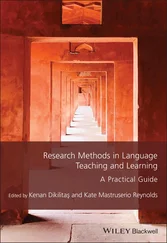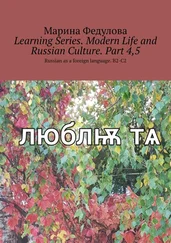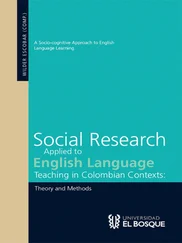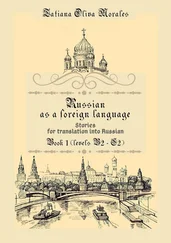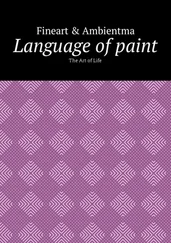1 ...7 8 9 11 12 13 ...39 Through Beauty the sensuous man is led to form and to thought; through Beauty the spiritual man is brought back to matter and restored to the world of sense.51 (18 thletter)
[Durch die Schönheit wird der sinnliche Mensch zur Form und zum Denken geleitet; durch die Schönheit wird der geistige Mensch zur Materie zurückgeführt und der Sinnenwelt wiedergegeben.]
In this educational/aesthetic context, individual freedom coupled with an inner sense of responsibility only becomes possible through cultivating and developing one’s senses, sentient life and artistic imagination through aesthetic experience .
There is no other way to make the sensuous man sensible other than to first make him aesthetic.52 (23rd letter)
[Es gibt keinen anderen Weg, den sinnlichen Menschen vernünftig zu machen, als daß man denselben zuvor ästhetisch macht]
Schiller’s concept of aesthetic education in which artistic processes and activity are viewed as decisive elements in all human development evidences clear parallels to the thinking of other philosophers of that period, most notably Herder and Schleiermacher. At the same time, his Ästhetische Briefe can be seen as representing a significant step in the development of this connection between art and education, which was later to have a direct and formative influence on the thinking of later educational reformers.
1.2.6 Developments in the 19 thand 20 thCentury
It was only towards the end of the 19 thcentury that Schiller’s writings began to have a marked influence on educational views. For most of the 19 thcentury the decisive figure was undoubtedly Johann Friedrich Herbart (1776–1841), who is generally viewed as the founder of the science of education. Whereas Herbart himself, particularly in his early writings, also emphasized the crucial role of pedagogical creativity and pedagogical tact in teaching, his followers stressed the formal principles and system of teaching which he elucidated in his later writings.53 The result was a highly systematic and rigid view of learning and teaching which dominated educational thinking until the last decades of the 19 thcentury.
It was the strong reaction to the rigidity of Herbartismus and its highly formalistic and scientific view of education that eventually led to the development of a range of concepts in which teaching and learning were considered in a broadly artistic context. These developments were strongly based on the ideas of German Idealism, as well as on the ideas of contemporary philosophers, most notably Dilthey and Nieztsche.54 The entire educational reform movement beginning in the last decades of the 19 thcentury and continuing through the Weimar Republic came to include a broad range of different movements including the Kunsterziehungsbewegung, Persönlichkeitspädagogik, Gesamtunterrichtsidee, Arbeitsschulidee and, after World War I, Waldorfpädagogik and the Jenaplan. Although the above-mentioned concepts all had their origins in Germany, there was also a clear international dimension to the ideas of educational reform which developed at that time. Andreas Flitner writes,
Reform Pedagogy in the first third of the century was indeed very original and innovative in Germany, but it can only be understood as an international movement. The basis for these events and thoughts lies in the entire European and American Modernist Movement. Everywhere there are parallels, encounters and influences.55
What these disparate movements shared in common were visions of an education based on the specific needs of children (“ vom Kinde aus” ). In strong contrast to the proponents of Herbartismus, they placed an emphasis on sensory and aesthetic experience, as well as on the development of the child’s inherent creative possibilities, predicated on a holistic, humanistic view of the child’s development. In looking back at the different reform movements at the beginning of the 20 thcentury, Flitner describes the common pedagogical credo they all shared:
Children should no longer just obey, but should understand as far as possible what it is all about: one should talk to them and discuss with them instead of giving them orders, they should have their own experiences with other children without adults always intervening, they should not be hit and ordered about; one should live with them, play with them, also work with them, as with younger friends instead of gravely setting examples to which they have to look up. All this appeared to the young educators and parents as a sign of a new style and an important part of their reforms. Youth was considered by this generation as the potential source for the renewal of society. Childhood and youth were proof of the true nature of humanity…56
In considering both the content and tenor of their ideals, it is unsurprising that despite clear differences in their educational programs, they all envisioned the arts as constituting a central aspect in their curricula and artistic principles as offering a paradigm for all teaching.57 Although this position was most strongly propagated in the Kunsterziehungsbewegung , which can be considered the most influential of the reform movements during that period, many common elements in their views of the role of artistic processes in teaching can be found in the works of the leading reformers of that time, including Ernst Linde ( Persönlichkeits-Pädagogik ), Berthold Otto and Wilhelm Albert ( Gesamtunterrichtsidee ), Georg Kerschensteiner ( Arbeitsschule ) and after WW I, Rudolf Steiner ( Waldorfpädagogik ), Peter Petersen ( Jenaplan ), as well as in the writings of Herman Nohl, Edward Spranger, Theodor Litt, Wilhelm Flitner and Friedrich Copei.58 Kozdon (1982) in his later study of the various educational reform movements of this time summarizes their common basis regarding the concept of teaching as an art:
In retrospect, it is evident that the different educational movements … while not exclusively born out of the concept of education as an art, nevertheless concur in their essential understanding of this idea. Leading educators understood their educational task as being closely related to an artistic activity. They believed that they would fail in their obligations to their pupils, if they carried out their daily work in a manner lacking ‘pedagogical artistry’.59
It will be instructive to look more concretely at how the concept of teaching as an art was understood at that time. The writings of Ernst Weber and Rudolf Steiner give an indication of the range of parallels and distinctions which existed in the different reform movements in this respect. Moreover, although their language and style are clearly rooted in the period in which they wrote, their arguments can still be viewed as relevant contributions to a discussion of this concept today.
1.2.7 The Teacher as Artist – Die Kunsterziehungsbewegung
The concept of teaching as an art which Weber, one of the leading proponents of the Kunsterziehungsbewegung , extensively developed in his writings can be considered perhaps the most detailed exposition of this idea until this point. He writes,
We want to express the view that we understand teaching and education to have a deep affinity with artistic activity and artistic work. This connection does not limit itself to the production of works of art, nor to artistic subjects in which artistic techniques are learned, but rather the entire educational work should contain an artistic element …60 (italics in original)
Weber’s view of the teacher as an artist is based on his understanding of the artistic qualities inherent in the act of teaching and is irrespective of the subject matter:
Читать дальше

